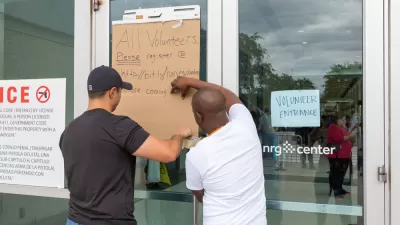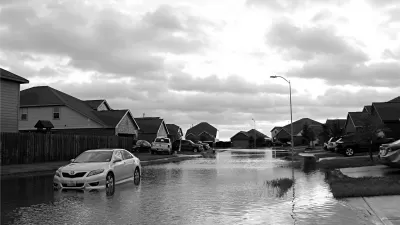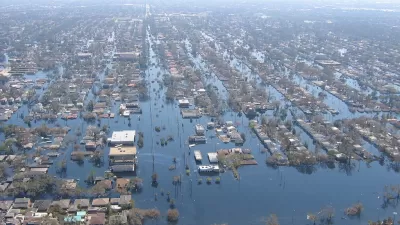How do we disrupt the cycle of rebuilding things exactly as they were before—if slightly hardened—after increasingly powerful weather events?
"Those of us who spent extended time in coastal Mississippi and Louisiana after Hurricane Katrina in 2005 are watching the weather and reading the news with a serious case of Groundhog Day. It’s rescue-recriminate-rebuild-repeat. Over and over again."
"I’m writing this as longer range impacts of Hurricane Harvey in Texas are just beginning to sink in and as another monster hurricane, Irma, has blown out of the Atlantic, into the Caribbean and is headed toward South Florida. We’re going to be grappling with competing narratives about disaster response and resilience for a while. Two suggestions:"
"First, those of us engaged in community and regional planning should keep in mind the core caution in last week’s post by my PlaceMakers partner, Hazel Borys:
'No amount of comprehensive planning or zoning reform can prepare a city for the sort of flood Houston is currently experiencing. An expected 50” of rain in a few days makes this an event that no place in the world is likely to sustain without massive personal and economic impacts.'
"My other suggestion: Let’s pick our battles. Beginning with recognizing the unhelpful aspects of the Groundhog experience and focusing on when and how to insert response strategies — including planning strategies — that show greater promise of making things at least a little better for those in the path of disaster."
Brown goes on with a lengthy analysis of city planning and hurricane response, ending with an encouragement to pick attainable steps toward resilience.
FULL STORY: A Hurricane Response Lesson: Disrupt the cycle of futility

Maui's Vacation Rental Debate Turns Ugly
Verbal attacks, misinformation campaigns and fistfights plague a high-stakes debate to convert thousands of vacation rentals into long-term housing.

Planetizen Federal Action Tracker
A weekly monitor of how Trump’s orders and actions are impacting planners and planning in America.

In Urban Planning, AI Prompting Could be the New Design Thinking
Creativity has long been key to great urban design. What if we see AI as our new creative partner?

King County Supportive Housing Program Offers Hope for Unhoused Residents
The county is taking a ‘Housing First’ approach that prioritizes getting people into housing, then offering wraparound supportive services.

Researchers Use AI to Get Clearer Picture of US Housing
Analysts are using artificial intelligence to supercharge their research by allowing them to comb through data faster. Though these AI tools can be error prone, they save time and housing researchers are optimistic about the future.

Making Shared Micromobility More Inclusive
Cities and shared mobility system operators can do more to include people with disabilities in planning and operations, per a new report.
Urban Design for Planners 1: Software Tools
This six-course series explores essential urban design concepts using open source software and equips planners with the tools they need to participate fully in the urban design process.
Planning for Universal Design
Learn the tools for implementing Universal Design in planning regulations.
Appalachian Highlands Housing Partners
Gallatin County Department of Planning & Community Development
Heyer Gruel & Associates PA
Mpact (founded as Rail~Volution)
City of Camden Redevelopment Agency
City of Astoria
City of Portland
City of Laramie





























